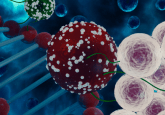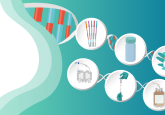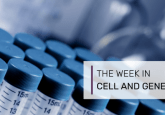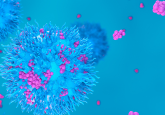Women to Watch: cryopreserving ovarian tissue with Maxine Semple
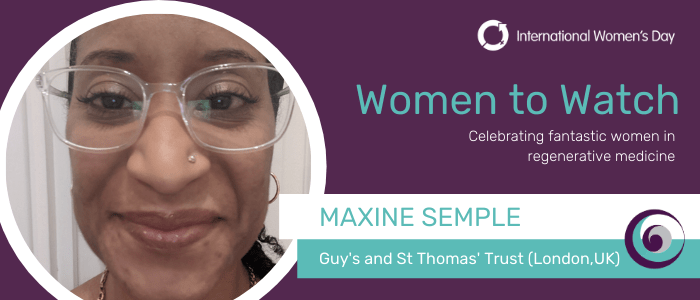
As part of our Women to Watch series on RegMedNet, we’re putting Ms Maxine Semple into the spotlight. Ms Semple (or Max as she prefers to be called) is the only female of four siblings from a mixed heritance, where her father was South American (Guyanese) and her mother is Indian and Portuguese.
Max is a fully licensed Clinical Embryologist with over 15 years’ experience and specializes in pre-genetic testing – a technique used to identify genetic defects in embryos created through in vitro fertilization before pregnancy. She is also the Lead Clinical Scientist introducing the Ovarian Tissue Cryopreservation Program, working in collaboration with Guy’s Assisted Conception unit and King’s College London (both London, UK). Previous to this, she was a Reproductive Toxicology Researcher for one of the world’s largest pharmaceutical companies.
Can you give us an overview of what your work in ovarian tissue cryopreservation involves?
My work with ovarian tissue cryopreservation entails setting up a unique service to oncology patients, giving them an option of preserving their fertility status prior to cancer therapy. Cancer treatments as we know may involve patients having to have radiotherapy or chemotherapy, and this can result in impacting their potential fertility status, since human eggs are highly sensitive to radiation along with some drugs used in cancer treatment (including other autoimmune diseases etc.). Conventional choices to store eggs and embryos are more time consuming and can take up to more than 4 weeks to complete. Some patients may not have this time frame (depending on individual diagnosis) since treatment may need to start imminently, therefore offering an alternative option helps to elevate some levels of stress due to this choice and can be scheduled in a matter of days.
Surgery involves the patient attending day surgery, and therefore they are able to be discharged the same day, with the intent to start treatment imminently.
My role is divided into three parts. The first part being the professional aspect and involves interacting and communicating between a multi-disciplinary team including oncologists, fertility clinicians, theater staff, technicians, embryologists, and scientists both internally and externally.
Second, the specialist technical aspect processing the samples takes several hours. My role and that of my team is to preserve the ovarian tissue, since the outer layer of the ovaries (referred to as the ovarian cortex) contains immature eggs. The cortex once removed is cut into extremely thin slices, frozen and stored in special freezers (storage tanks) at a very low temperature (-196⁰C) until the patient has completed treatment, then the tissue can be thawed and replaced back (similar to a transplant procedure). This will allow the female to regain her menstrual cycle and have the potential to become pregnant using her own biological eggs.
Last, our work is regulated under two Parliamentary Governing bodies, one being the Human Fertilization and Embryology Authority (HFEA) and the other the Human Tissue Authority (HTA) where licenses to perform these specialist services are regulated, due to the legal implications of the service. So, we ourselves have to not only be up to date with ever increasing technical advances, but also updated legal requirements and legislations.
What are the best aspects of your job? What are the most challenging parts?
The best aspects of my job can be split into two. First, I take pride in being part of the team setting up a new service to the public. Knowing that we’ve listened to our patients and are now in a position to offer them alternative options to preserving their fertility that wasn’t available previously is an accomplishment in itself.
Having choices to another element in their prognosis gives hope in what can feel like initially a frightful and uncertain situation. Most of the patients to date are young women, and despite the fact that they are focused on the treatment in hand, having the reassurance that this novel service may give them the potential opportunity of still being able to have a family down the line can change and improve their overall mindset and contribute to a speedy recovery.
Second, being part of a highly skilled and specialist multidisciplinary team within a world-renowned teaching hospital gives me motivation to look at areas I can expand the service to a broader range of patients, in addition to offering potential future collaborations with other Trusts across London.
Working alongside like-minded individuals sharing the same goals and aspirations makes my job easier and rewarding. The challenges faced are that some women may be successful in having healthy tissue stored, whilst there will be a small percentage that might not be so successful. My role reflects my passion to want to do more, and I have the flexibility and autonomy to improve the outcomes of these women.
Have you faced any obstacles in your field due to your gender?
Working within the field of assisted reproductive technologies under the umbrella of ‘women’s services’ and being a woman myself, I have found that majority of women are not placed within leadership roles heading new services since it can be quite a male-dominated field. This has been my impression even at the earlier stages of my scientific and research career. However, in my current role, I am not only the first female, but also the first female of color to head a new service within my department. My vision is to set a precedence that encourages, supports and motivates other women (and particularly women of color) to explore a career path into this specialist field of work.
In your opinion, what more could be done to promote gender equality in your field?
In my opinion, it’s about access to information. Giving people (irrespective of who they are and where they come from) information on job opportunities and an insight into my field of work. By me (and people in positions like me) being an ambassador and championing what we do around schools and job fairs can open up doors of intrigue and illustrate positive female role models.
By championing the role, the sector and what impact I am making via these scientific breakthroughs using various forms of social media allows science to be accessible to all. Using these platforms of communication and publicity (such as this interview) utilizes the most relevant channels of communication.
Maybe in the future, academic access routes can be reviewed to allow non-conventional qualifications the ability to apply for scientific roles. This will hopefully broaden the criteria and give an equal opportunity and balance for individuals attempting to access career paths in specialist fields.
What advice would you give to young women hoping to pursue a career in your field?
There is a lack of public awareness of this specialist field. I myself stumbled upon my chosen career path by sheer chance whilst completing my industrial placement for my degree. It was one individual (a female) who challenged my career choice and opened my eyes into the world of ‘fertility’. More females from STEM backgrounds need to volunteer to speak to young adults and children in primary and secondary schools, as well as representatives from these different specialties to attend job fairs. Young adults interested in medicine or science should be encouraged to also contact hospitals and request observation days within different departments of the hospital. Many Trusts promote the most popular services, but there are numerous specialist departments that might intrigue a small handful of individuals. And it might be this handful that seek a non-conventional career in medicine or science like myself.
Lastly, who is a female scientist who has inspired you?
Katherine Johnson was a physicist and mathematician who calculated the trajectories for numerous NASA missions. She was instrumental in aiding the first astronaut into space.
Some might recall hearing of her from the movie ‘Hidden Figures’ (one of my favorite movies of all time), where she was the main character. She was a mathematical genius. Katherine overcame many obstacles. In the 1960s both racism and sexism was rife. She showed huge determination and resilience against a heavily male-dominated environment but had the willpower to persevere. This recently led to her being awarded the Presidential Medal of Freedom.
If you recall the film, it took a single individual to recognize her potential and they gave her the platform to showcase her skills and ability. The same chance I was given, and the same opportunity I would like to show others.
Acknowledgements
This interview was put together and conducted by our Senior Editor, Sharon Salt, with written responses provided to us by Maxine Semple.
Disclaimer
The opinions expressed in this interview are those of the interviewee and do not necessarily reflect the views of RegMedNet or Future Science Group.
You might also like:
